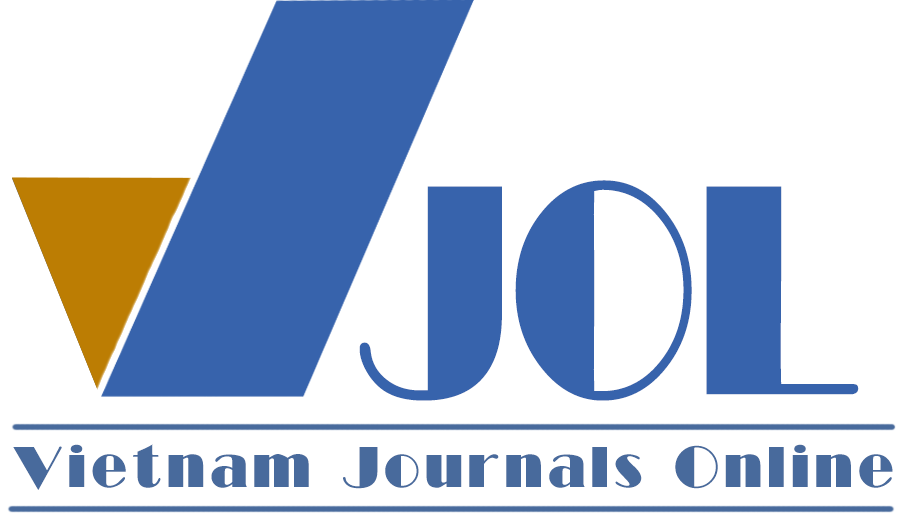Applying the extended theory of planned behavior to investigate consumer purchase intention toward street food vendors
Authors
DOI: https://doi.org/10.57110/vnujeb.v3i6.240Keywords:
Extended Theory of Planned Behavior, street food, purchase intention, social media, past behaviourReferences
Ajzen, I. (1991). The theory of planned behavior. Organizational Behavior and Human Decision Processes, 50(2), 179-211. https://doi.org/10.1016/0749-5978(91)90020-T
Ajzen, I., & Fishbein, M. (2008). Scaling and testing multiplicative combinations in the expectancy–value model of attitudes. Journal of Applied Social Psychology, 38(9), 2222-2247. https://doi.org/10.1111/j.1559-1816.2008.00389.x
Ajzen, I., Fishbein, M., Lohmann, S., & Albarracín, D. (2018). The influence of attitudes on behavior. In D. Albarracín & B. T. Johnson (Eds.), The Handbook of Attitudes, Volume 1: Basic Principles (pp. 197-255). Routledge.
Al-Nahdi, M., Ismail, I., Haron, H., & Islam, M. A. (2009). Intention to patronage halal restaurants among Malaysian Muslims: An issue of halal perception. Paper presented at the The GSMI (First) Global Business Summit Conference.
Bowen, N. K., & Guo, S. (2011). Structural Equation Modeling. Oxford University Press.
Chen, Y. C., Wang, Y. H., & Tsai, C. T. (2020). Factors affecting consumer behavior toward street food: A study of the Taipei metropolitan area. Journal of Foodservice Business Research, 23(3), 246-261.
Cheng, S., Lam, T., & Hsu, C. H. (2005). Testing the sufficiency of the theory of planned behavior: A case of customer dissatisfaction responses in restaurants. International Journal of Hospitality Management, 24(4), 475-492. https://doi.org/10.1016/j.ijhm.2004.10.006
Choi, J., Lee, A., & Ok, C. (2013). The effects of consumers' perceived risk and benefit on attitude and behavioral intention: A study of street food. Journal of Travel & Tourism Marketing, 30(3), 222-237. https://doi.org/10.1080/10548408.2013.774916
Conner, M., & Armitage, C. J. (1998). Extending the theory of planned behavior: A review and avenues for further research. Journal of Applied Social Psychology, 28(15), 1429-1464. https://doi.org/10.1111/j.1559-1816.1998.tb01685.x
Eagly, A. H., & Chaiken, S. (1993). The psychology of attitudes. Harcourt Brace Jovanovich College Publishers.
Fellows, P., & Hilmi, M. (2011). Selling street and snack foods. FAO Diversification Booklet (18).
Fornell, C., & Larcker, D. F. (1981). Structural equation models with unobservable variables and measurement error: Algebra and statistics. Journal of Marketing Research, 18(1), 382–388. https://doi.org/10.1177/002224378101800313
Habib, K. R. (2016). Understanding challenges faced by street food vendors to maintain street food hygiene in Dhaka city. Journal of Food and Nutrition Sciences, 4(4), 78–85. https://doi.org/10.11648/j.jfns.20160404.11
Hair, J. F. (2011). Multivariate data analysis: An overview. In M. Lovric (Eds.), International Encyclopedia of Statistical Science (pp. 904-907). Springer.
Henderson, J. C. (2017). Street food, hawkers and the Michelin Guide in Singapore. British Food Journal, 119(4), 790-802. https://doi.org/10.1108/BFJ-10-2016-0477
Henderson, J. C. (2019). Street food and tourism: A Southeast Asian perspective. In: Park, E., Kim, S., Yeoman, I. (eds) Food Tourism in Asia (pp. 45-57). Springer. https://doi.org/10.1007/978-981-13-3624-9_4
Hiemstra, A. M., Van der Kooy, K. G., & Frese, M. (2006). Entrepreneurship in the street food sector of Vietnam—Assessment of psychological success and failure factors. Journal of Small Business Management, 44(3), 474-481. https://doi.org/10.1111/j.1540-627X.2006.00183.x
Huang, E., & Chuang, M. H. (2007). Extending the theory of planned behaviour as a model to explain post-merger employee behaviour of IS use. Computers in Human Behavior, 23(1), 240-257. https://doi.org/10.1016/j.chb.2004.10.010
Huang, L., Bai, L., Zhang, X., & Gong, S. (2019). Re-understanding the antecedents of functional foods purchase: Mediating effect of purchase attitude and moderating effect of food neophobia. Food Quality and Preference, 73, 266-275. https://doi.org/10.1016/j.foodqual.2018.11.001
IBISWorld. (2019). Bakery product manufacturing in Australia trends (2016-2021). https://www.ibisworld.com/au/industry/bakery-product-manufacturing/4227/
Jensen, R., & Peppard Jr, D. M. (2003). Hanoi’s informal sector and the Vietnamese economy: A case study of roving street vendors. Journal of Asian and African Studies, 38(1), 71-84. https://doi.org/10.1177/002190960303800104
Kun-Shan, W., & Yi-Man, T. (2011). Applying the extended theory of planned behavior to predict the intention of visiting a green hotel. African Journal of Business Management, 5(17), 7579-7587. https://doi.org/10.5897/AJBM11.684
Lai, P. Y., Chen, J. S., & Huang, C. Y. (2021). The impact of social media on consumer behavior in Taiwan's street food industry. Journal of Foodservice Business Research, 24(1), 23-40.
Le, T. M., & Liaw, S. Y. (2017). Effects of pros and cons of applying big data analytics to consumers’ responses in an e-commerce context. Sustainability, 9(5), 798. https://doi.org/10.3390/su9050798
Lin, C. L., Lee, S. H., & Horng, D.-J. (2011). The effects of online reviews on purchasing intention: The moderating role of need for cognition. Social Behavior and Personality: an international journal, 39(1), 71-81. https://doi.org/10.2224/sbp.2011.39.1.71
Ngoc, T., Hang, N., Thanh, D., & Hoa, L. (2020). Evaluation of microbial safety knowledge, attitude and practice of street food vendors and consumers in Can Tho City, Vietnam. Food Research, 4(5), 1802-1814. https://doi.org/10.26656/fr.2017.4(5).153
Rhodes, R. E., & Courneya, K. S. (2003). Investigating multiple components of attitude, subjective norm, and perceived control: An examination of the theory of planned behaviour in the exercise domain. British Journal of Social Psychology, 42(1), 129-146. https://doi.org/10.1348/014466603763276162
Schubert, F. (2008). Exploring and predicting consumers’ attitudes and behaviors towards green restaurants. The Ohio State University.
Teng, C. C., Lee, T. T., & Lu, L. C. (2016). Factors influencing the purchase intention of health supplements among young Taiwanese consumers. Asia Pacific Journal of Marketing and Logistics, 28(3), 514-528.
Tran, M. N. (2010). Institutional inconsistencies and microentrepreneurial intent to quit a business: Street vendors in Vietnam. Western Kentucky University.
Tsai, C. Y. (2010). Applying the theory of planned behavior to explore the independent travelers’ behavior. African Journal of Business Management, 4(2), 221-234.
Ukenna, S. I., & Ayodele, A. A. (2019). Applying the extended theory of planned behavior to predict sustainable street food patronage in a developing economy. Journal of Food Products Marketing, 25(4), 404-434. https://doi.org/10.1080/10454446.2019.1572561
Wang, X., Zhang, M., & Liu, Y. (2020). The effect of past behavior on the continuance intention of social media use: An empirical study of WeChat users. Telematics and Informatics, 50, 101377. https://doi.org/10.1108/IJCMA-09-2019-0166
Yavas, U., & Babakus, E. (2009). Modeling patronage behavior: A tri‐partite conceptualization. Journal of Consumer Marketing, 26(7), 516-526. https://doi.org/10.1108/07363760911001574
Zhang, X., & Kim, J. (2013). Investigating factors that influence mobile app purchase intention. International Journal of Mobile Marketing, 8(2), 66-81.
Zhang, X., & Zhao, Q. (2018). An empirical study on the influence of past behavior and perceived enjoyment on continued intention to use social media. Journal of Business Research, 87, 134-144.
Downloads
Downloads
Published
Abstract View
PDF Downloaded
How to Cite
Issue
Section
License
Copyright (c) 2023 Le Hai Binh, Le Thi Mai

This work is licensed under a Creative Commons Attribution-NonCommercial 4.0 International License.
by VNU Journal of Economics and Business
Most read articles by the same author(s)
- Le Thi Mai, Luu Thi Minh Ngoc, Ngo Thien My, Le Bao Ngoc, The influence of utilitarian and hedonic value on customer satisfaction and repurchase intention in e-commerce , VNU University of Economics and Business: Vol. 4 No. 4
- Le Bao Ngoc, Le Hai Binh, Nguyen Hoang Giang, Le Thi Mai, Shu-Yi Liaw, Why young consumers choose second-hand clothes: Insights from long-term orientation and personal values , VNU University of Economics and Business: Vol. 5 No. 2






